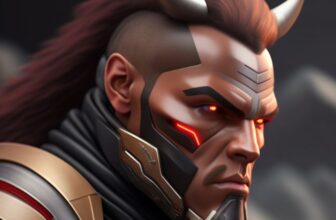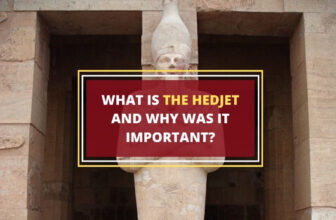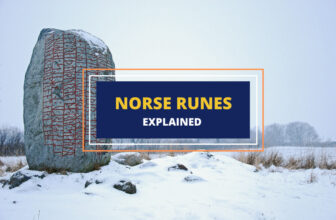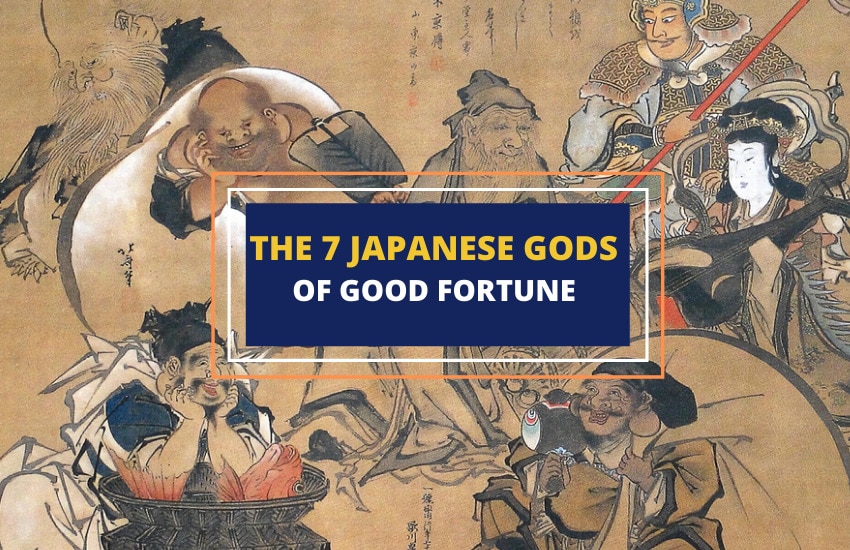
Table of Contents
A group of seven popular Japanese gods, the Shichifukujin is associated with good fortune and happiness. The group consists of Benten, Bishamon, Daikoku, Ebisu, Fukurokuju, Hotei, and Jurōjin. They’re of diverse origin blending Shinto and Buddhist beliefs and have roots in Taoist and Hindu traditions. Of the seven, only Daikoku and Ebisu were originally Shinto deities.
Traveling together in the treasure ship Takarabune, the Shichifukujin sail through the heavens and to human ports during the first several days of the New Year bringing with them treasures.
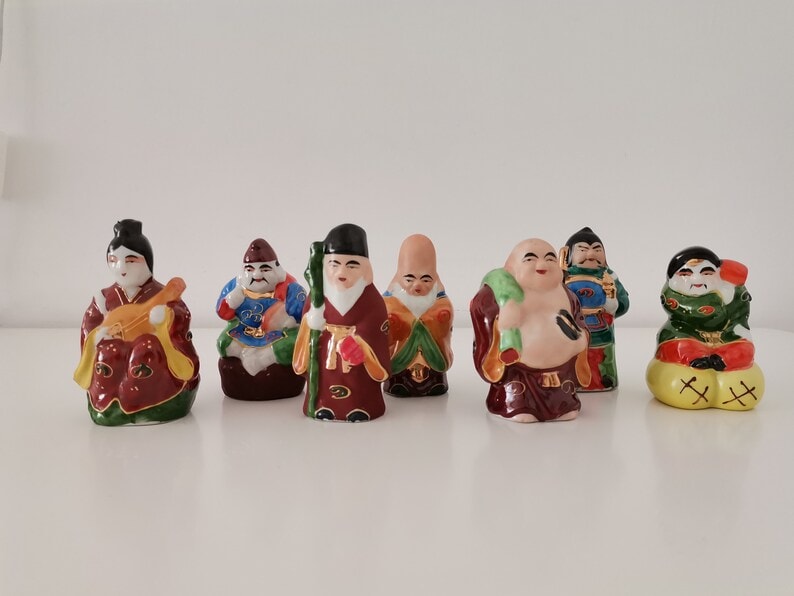
The treasures include:
- The magic key to the gods’ storehouse
- A raincoat that offers protection from evil spirits
- The hammer that brings forth a shower of gold coins
- The purse that never empties of coins
- Rolls of expensive cloth
- Boxes of gold coins
- Precious jewels and copper coins
- The hat of invisibility
The earliest mention of the seven gods as a group was in 1420 in Fushimi.
Since the late Middle Ages, the Shichifukujin have been worshipped in Japan, especially during the first part of the new year. Each god generally represents good fortune but also carries certain characteristics and associations. Sometimes, one god’s roles overlap with the others’ leading to confusion about which god is the patron of a certain profession.
Seven Japanese Gods
1- Benten – The Goddess of Music, Arts, and Fertility
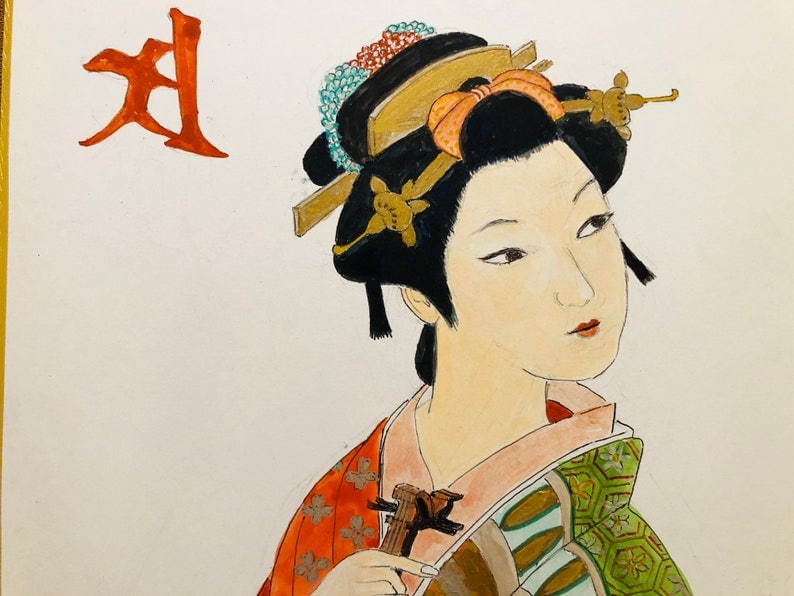
The only female member of the shichifukujin, Benten is widely worshipped in Japan. In fact, she’s one of the most popular deities there. She’s the patron of creative people such as writers, musicians, artists, and geishas. She’s sometimes called “Benzaiten,” meaning the deity of talent and eloquence.
The goddess is commonly depicted carrying a biwa, a traditional lute-like instrument, and accompanied by a white snake who serves as her messenger. However, she appears in many forms. In some, she is portrayed as a beautiful woman playing music. In others, she’s a monstrous eight-armed woman holding weapons. She is also sometimes shown as a snake with three heads.
Originating from the Buddhist tradition, Benten is identified with the Indian river goddess Sarasvati who probably became known in Japan along with Buddhism in the mid-seventh century. In some traditions, she’s the personification of the river that flows from Mt. Meru, the Buddha’s residence. She’s also associated with the sea, and many of her shrines are located near it, including the famous “floating” shrine of Itsukushima.
In one legend, Benten once descended to earth to fight with a dragon that was devouring children. To put an end to his ravages, she married him. This is why she’s sometimes depicted riding a dragon. Her avatars and messengers are serpents and dragons.
2- Bishamon – The God of Warriors and Fortune
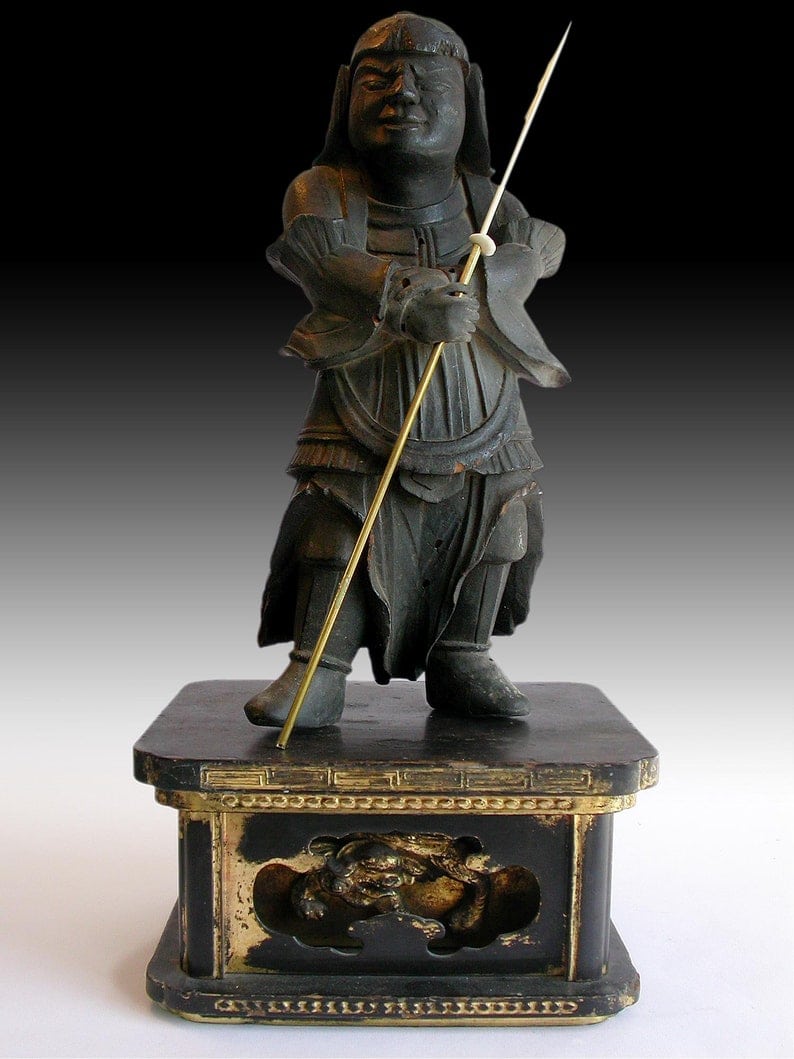
The warrior god of the Shichifukujin, Bishamon is sometimes called Bishamonten, Tamon, or Tamon-ten. He is not seen as a Buddha but as a deva (demigod). He is the patron of fighters and protector of holy sites, and is often depicted wearing Chinese armor, looking fierce, and carrying a spear and a pagoda. In many images, Bishamon is portrayed trampling demons. This symbolizes his conquest of evil, specifically, the enemies of Buddhism. As a protector against evil, he’s often shown standing on slain demons with a wheel or ring of fire around his head, resembling a halo. His main identifying characteristic though is a stupa.
Originally a god from the Hindu pantheon, the idea of Bishamon was brought to Japan from China. In ancient China, he was associated with the centipede, which may also have been linked with wealth, magical antidotes, and protection.
In Japanese Buddhist mythology, each of the four compass directions has its own guardian—and Bishamon is the guardian of the north, identified with Vaishravana, or Kubera. In the Buddhist tradition, the North was supposed to be the land of treasures guarded by spirits.
As a protector of Buddhist Law (dharma), Bishamon distributes wealth to all who follow the law. He protects holy places where the Buddha gave his teachings. It’s said that he helped the Japanese regent Shōtoku Taishi in his war to establish Buddhism at the imperial court. Later, the temple city of Shigi was dedicated to the god.
At one point in history, he was portrayed with a wife, Kichijōten, the goddess of beauty and fortune, but she has been largely forgotten in Japan.
3- Daikoku – The God of Wealth and Commerce
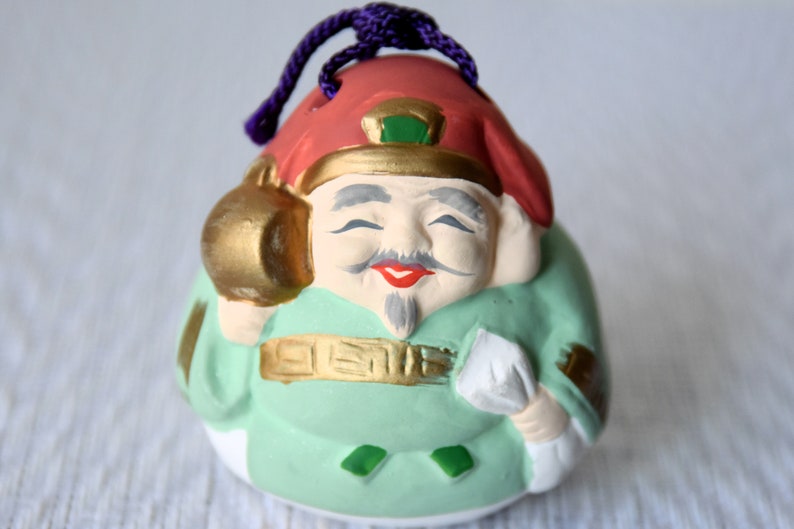
The leader of the Shichifukujin, Daikoku is the patron of bankers, merchants, farmers, and cooks. Sometimes called Daikokuten, the god is commonly depicted wearing a hat and carrying a wooden mallet, which brings a shower of gold coins called ryō. The latter is a symbol of the hard work it takes to become rich. He also carries a bag that contains precious things and sits on rice bags.
Associated with the Indian deity Mahākāla, Daikoku is believed to have originated from Buddhism. Members of the Tendai Buddhist sect even worship him as the protector of their monasteries. In Shinto worship, he’s identified with Ōkuninushi or Daikoku-Sama, the kami of Izumo, likely because their names are similar. A friend of children, he’s also called the Great Black One.
Once Mahākāla was accepted into Japanese mythology, his image transformed from Mahākāla into Daikoku, and became known as a jovial, kind figure who spread wealth and fertility. Earlier images of him show his darker, wrathful side, whereas later artworks show him happy, fat, and smiling.
It’s widely believed that placing a picture of Daikoku in a kitchen brings prosperity and good luck, ensuring that there’ll always be nutritious food to eat. No wonder the daikokubashira, the main pillar of a traditional Japanese house, is named after him. Small figurines of Daikoku can be found in many shops throughout the country. One of the ways he is worshipped in Japan today is by pouring rice water over statues of him.
4- Ebisu – The God of Work
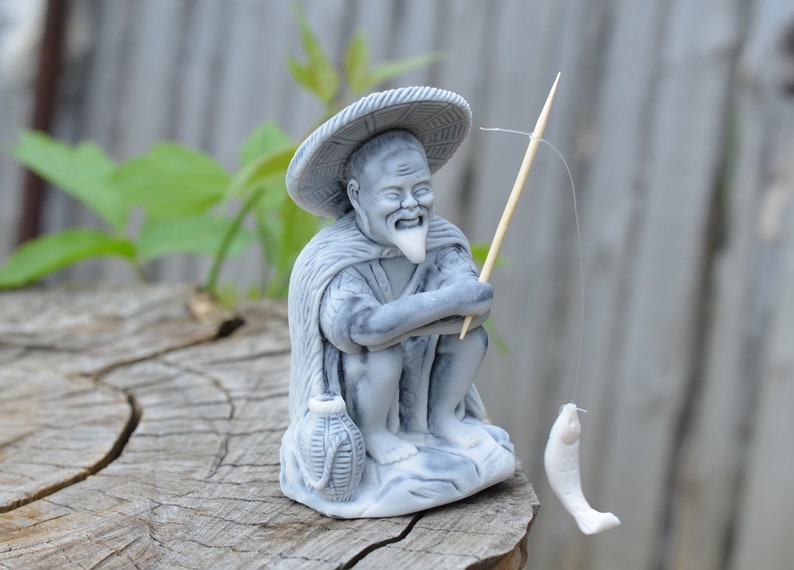
The son of Daikoku, Ebisu is the patron of fishermen and tradesmen. Symbolizing the wealth of the sea, he’s commonly portrayed as smiling, happy, and fat, dressed in traditional Heian period clothes, carrying a fishing rod and a large fish—called tai or sea bream. He is said to be deaf and partially crippled. His worship was most important in the coastal region near Osaka. As one of the Shichifukujin, he is said to help merchants with finding and accumulating wealth. Unsurprisingly, in Japan today he is popular among restaurants and fisheries.
Ebisu is the only one of the seven gods purely of Japanese origin. He is associated with Hiruko, the firstborn son of the creator couple Izanami and Izanagi. Sometimes, he’s linked with the Shinto kami Sukunabikona who appears as a wandering traveler that provides good fortune when treated hospitably. In some stories, he’s also associated with Kotoshironushi, a son of the mythological hero Ōkuninushi.
In one legend, Ebisu floats from place to place, often along the shores of the Seto Inland Sea. If a fisherman catches him in a net, he transforms into a stone. If the stone is worshipped and given offerings of fish and drinks, it provides blessings to the owner. The god is also associated with whales, as he comes to bring bounty and then leaves again to go back to the depths of the sea.
5- Fukurokuju – The God of Wisdom and Longevity
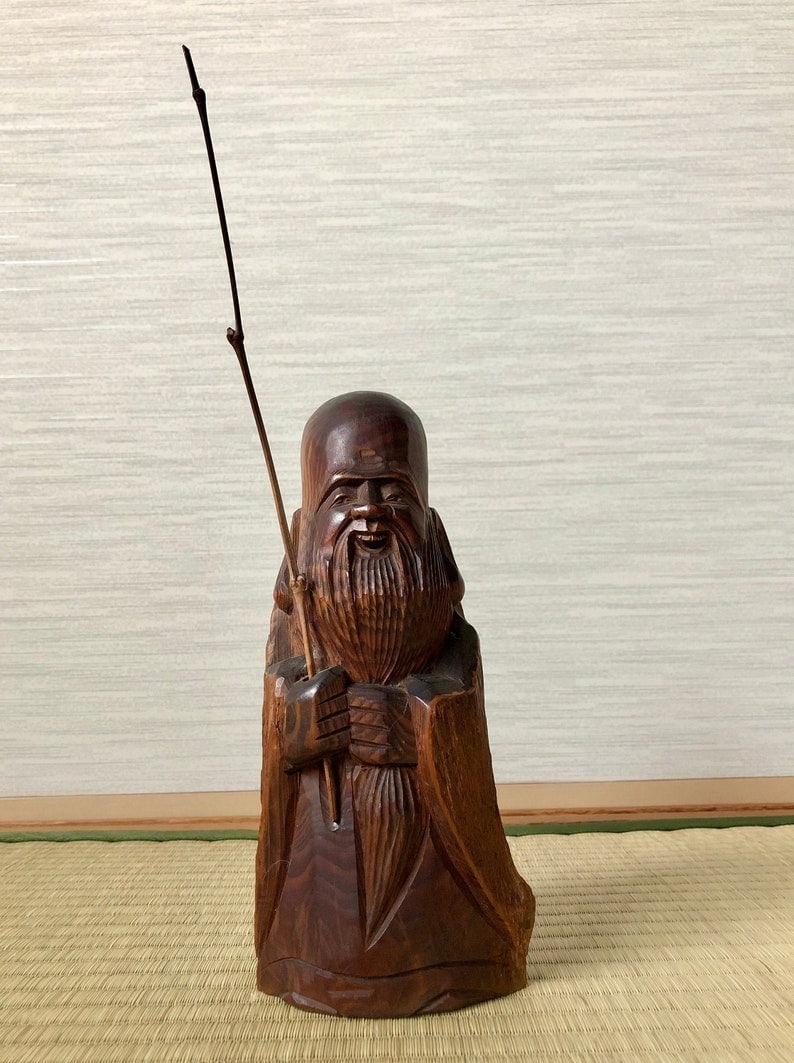
The patron of chess players, Fukurokuju is the god of wisdom. His name is derived from Japanese terms fuku, roku, and ju which literally mean happiness, wealth, and longevity. He’s usually portrayed as a fun-loving deity, often with other Shichifukujin like Ebisu, Hotei, and Jurōjin.
Dressed in Chinese robes, Fukurokuju is believed to be based on a real Chinese Taoist sage. He’s depicted as an old man with a high forehead, nearly the size of the rest of his body, which the Taoists consider as a sign of intelligence and immortality. He’s the only Japanese god credited with the ability to raise the dead. He’s often accompanied by a deer, crane, or tortoise, which also symbolize long life. He carries a cane in one hand and a scroll in the other. On the scroll are writings about the wisdom of the world.
6- Hotei – The God of Fortune and Contentment
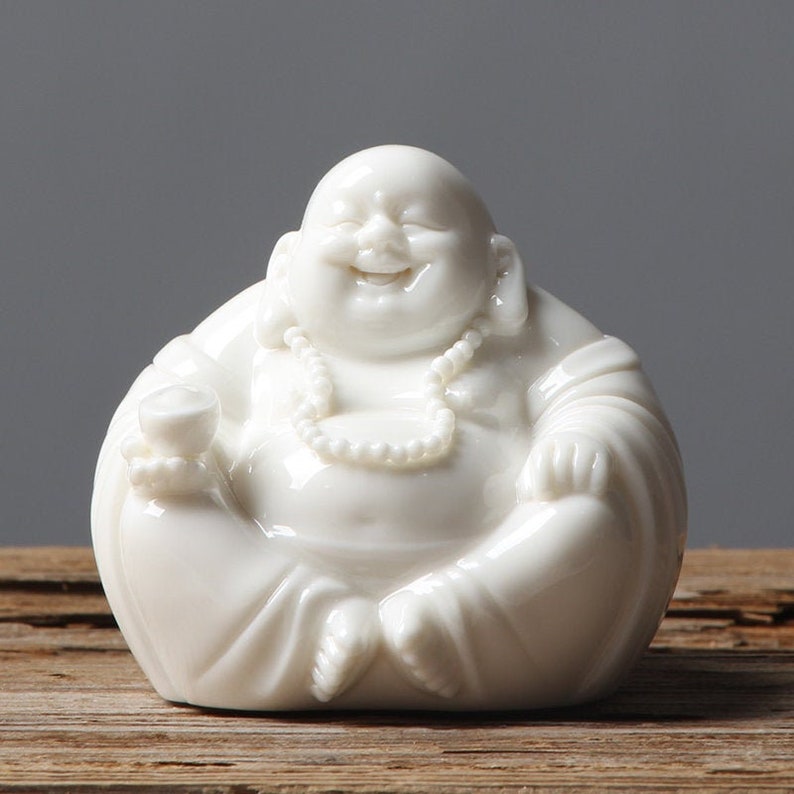
One of the most popular of the Shichifukujin, Hotei is the patron of children and barmen. He’s depicted as a fat man with a big belly, carrying a large Chinese fan and a cloth bag full of treasures. His name can be literally translated as cloth bag.
As a god of happiness and laughter, Hotei became the model for the typical Chinese laughing Buddha. Some even believe that he’s an incarnation of Amida Nyorai, the Buddha of Limitless Light, as he’s more concerned with giving and doesn’t demand much.
Some tradition also associates Hotei with the benevolent Chinese monk named Budai who became the incarnation of the Bodhisattva Maitreya, the future Buddha. Like Hotei, he carried all of his belongings in a jute bag. Some also regard Hotei as the god of thrift and philanthropy.
7- Jurōjin – The God of Longevity
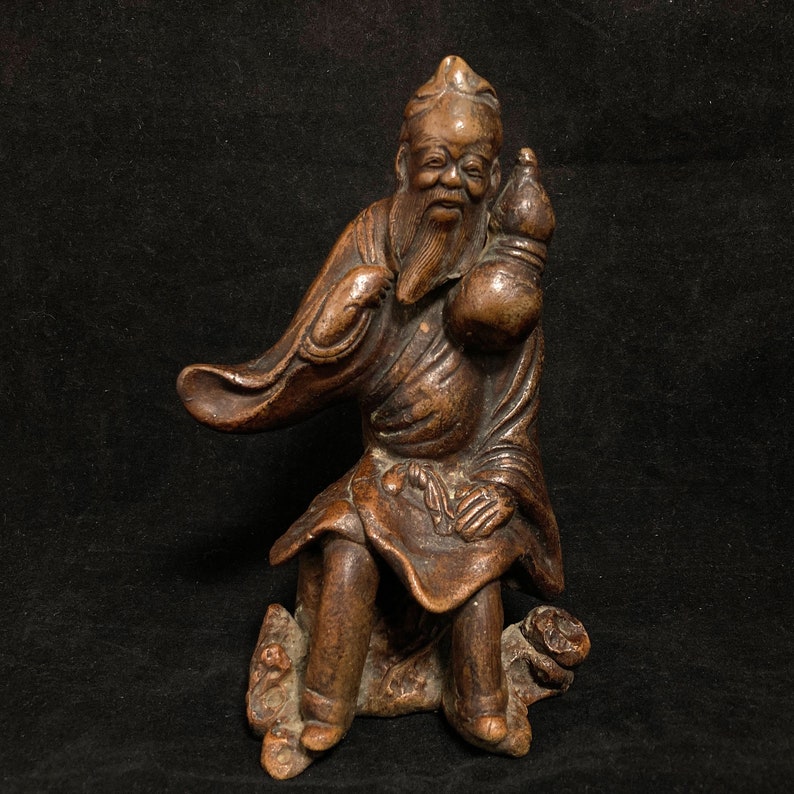
Another god of long life and old age, Jurōjin is the patron of the elderly. He’s often depicted as an old man with a white beard, carrying a staff with a scroll attached. It’s said that the scroll carries the secret of everlasting life. Often confused with Fukurokuju, Jurōjin is depicted wearing a scholar’s headdress and has a serious expression at all times.
FAQs About the Seven Lucky Gods
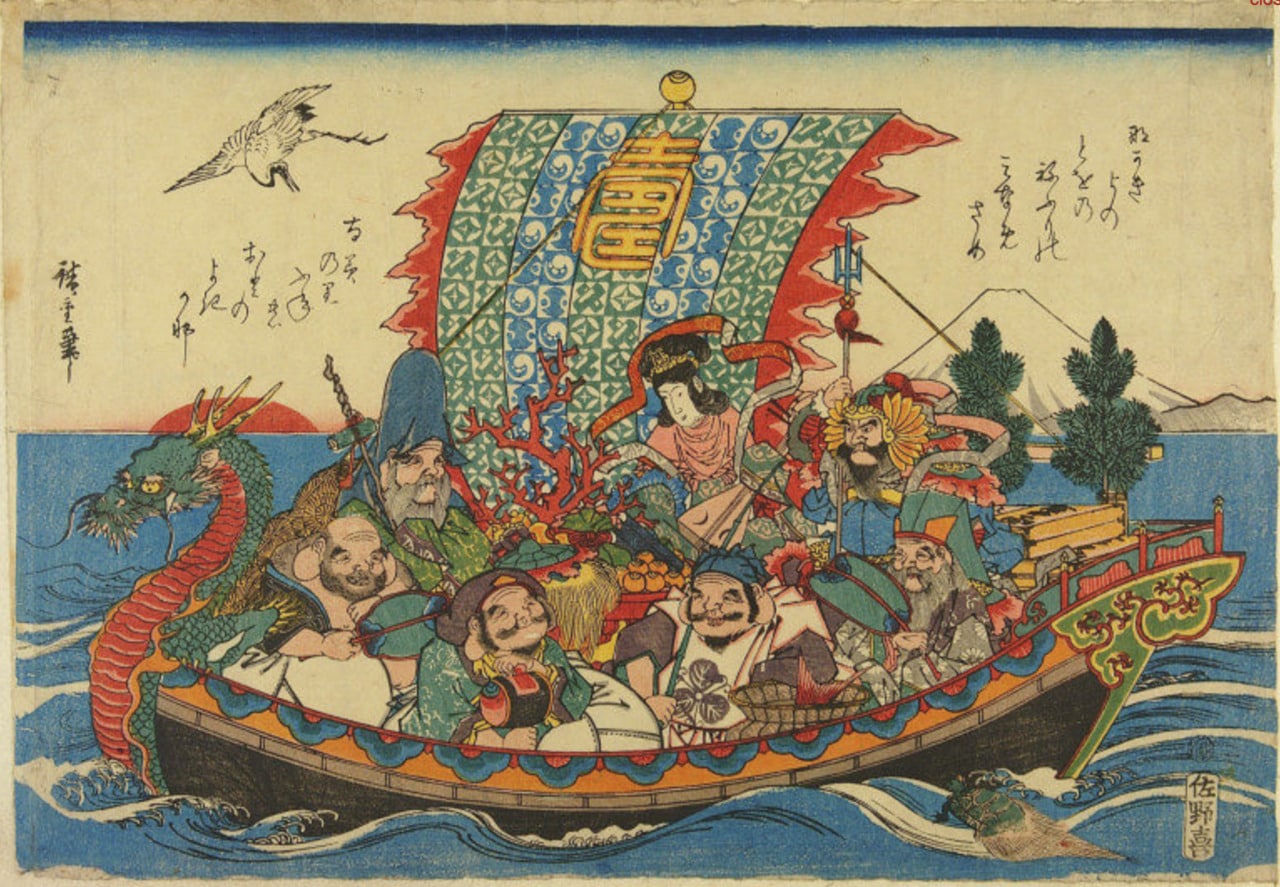
The world has always held the number 7 in awe. There are seven wonders of the world and seven deadly sins. Seven is considered a lucky number in many places. The Japanese are no exception.
Yes, there’s even a type of beer named after him with a picture of his happy face on the can!
No. There is one female deity among them – Benzaiten. She’s the goddess of everything that flows such as water, music, time, and words.
His name comes from the Japanese symbols for several positive things – fuku meaning “happiness”, roku, meaning “wealth”, and ju meaning “longevity”.
Absolutely. These icons are available on many sites online, like this group of glass figurines. In Japan, you’ll find them in the markets and street stalls for very reasonable prices.
Wrapping Up
The Shichifukujin are the seven Japanese gods of good fortune who are said to bring luck and prosperity. Many are worshipped around New Year in Japan. Throughout the country, you’ll see paintings and sculptures of them at temples, as well as talismans in restaurants, bars, and shops. Since they’re believed to grant good luck, it’s traditional to sleep with a picture of them under the pillow to obtain some of the prosperity they represent.





